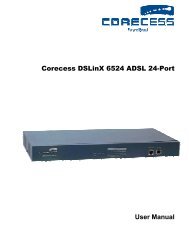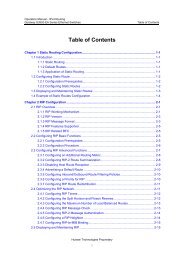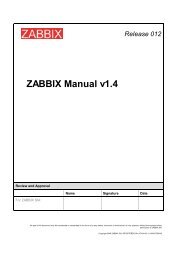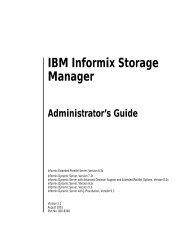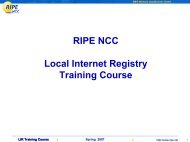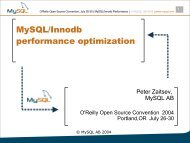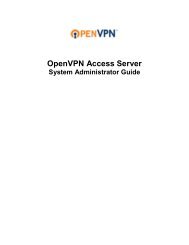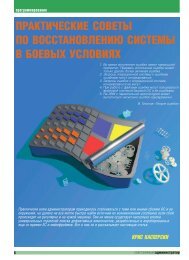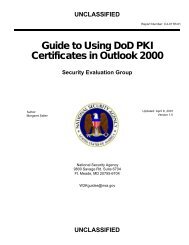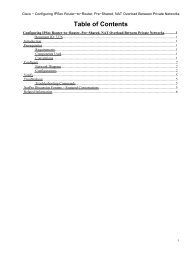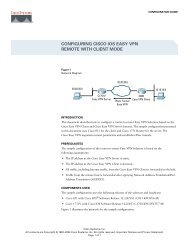Solaris Application Programming, 1/e - Chapter 4 - Parent Directory
Solaris Application Programming, 1/e - Chapter 4 - Parent Directory
Solaris Application Programming, 1/e - Chapter 4 - Parent Directory
Create successful ePaper yourself
Turn your PDF publications into a flip-book with our unique Google optimized e-Paper software.
76 <strong>Chapter</strong> 4 Informational Tools<br />
time: The time at which the sample was taken. In this case, the samples<br />
were taken at one-second intervals.<br />
lwp: The LWP that is being sampled. If the -f option is passed to cputrack,<br />
it will follow child processes. In this mode, data from other LWPs will be<br />
interleaved.<br />
event: The event type, such as ticks or the exit line. Each tick event is the<br />
number of events since the last tick. The exit line occurs when a process exits,<br />
and it reports the total number of events that occurred over the duration of the<br />
run. The event line also reports data at points where the process forks or joins.<br />
pic0 and pic1: The last two columns report the number of events for the<br />
two performance counters. If cputrack were rotating through performance<br />
counters, the names of the performance counters would be reported<br />
after a # sign.<br />
It is also possible to attach cputrack to a running process. The option for this is<br />
-p , and cputrack will report the events for that process.<br />
4.4.5 Reporting Bus Activity (busstat)<br />
The busstat tool reports performance counter events for the system bus. The<br />
available performance counters are system-dependent. The -l option lists the<br />
devices that have performance counter statistics available. The -e option will<br />
query what events are available on a particular device.<br />
The currently set performance counters can be read using the -r option. To<br />
select particular performance counters it is necessary to use the -w option, but this<br />
requires superuser privileges. An example of using busstat to measure memory<br />
activity on an UltraSPARC T1-based system is shown in Example 4.35.<br />
Example 4.35 Using busstat to Query Memory Activity on an UltraSPARC T1<br />
# busstat -l<br />
Busstat Device(s):<br />
dram0 dram1 dram2 dram3 jbus0<br />
# busstat -e dram0<br />
pic0<br />
mem_reads<br />
mem_writes<br />
....<br />
pic1<br />
mem_reads<br />
mem_writes<br />
...<br />
# busstat -w dram0,pic0=mem_reads,pic1=mem_writes<br />
time dev event0 pic0 event1 pic1<br />
1 dram0 mem_reads 45697 mem_writes 8775<br />
2 dram0 mem_reads 37827 mem_writes 3767



